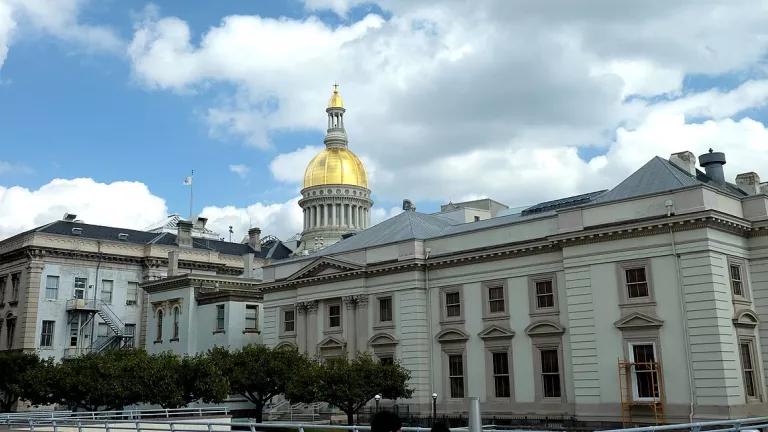Report Highlights Importance of City-Level Energy Solutions
This is part of a series of blogs on NRDC’s new report, “America’s Clean Energy Frontier: The Pathway to a Safer Climate Future.”
In the wake of President Trump’s withdrawal from the Paris Climate Agreement, hundreds of U.S. mayors have stepped forward in recent months to make significant commitments to reduce climate pollution at the local level. By committing to ambitious clean energy and climate targets, cities are establishing themselves as some of the biggest players in meeting our nation’s climate goals.
As demonstrated by NRDC’s new report “America’s Clean Energy Frontier: The Pathway to a Safer Climate Future,” these commitments are more important now that ever in forging the path to a safer, more prosperous climate future. Based on modeling conducted by NRDC and Energy + Environmental Economics (E3), the report finds that the United States can achieve an ambitious 80 percent reduction in greenhouse gas (GHG) emissions by the year 2050 through cost-effective and proven solutions. The report also finds that the actions of cities, states, utilities, and other stakeholders will be paramount to advancing this clean energy transition.
This is particularly true when it comes to improving energy use in buildings, one of the key strategies outlined in NRDC’s pathway. The buildings sector is the single largest energy sink in the United States, accounting for 50 to 75 percent of citywide carbon pollution in many cities. Based on NRDC’s modeling, increased energy efficiency implementation and retrofits in residential and commercial buildings comprise 21 percent of the GHG reductions in the pathway, requiring a 46 percent energy demand reduction in the U.S. buildings sector by 2050. The report demonstrates there are several critical strategies to reach these targets, such as making energy efficiency improvements to cut energy waste, using near-zero-carbon electricity to displace fossil fuel use in buildings, and expanding utility-scale and locally generated renewable energy options to power our buildings.
The City Energy Project (CEP), a joint initiative of NRDC and the Institute for Market Transformation, is already working to advance proven, innovative solutions to cut energy waste in large, existing buildings. Working with 20 leading U.S. cities, the Project is catalyzing building energy efficiency improvements through a suite of policies and programs, such as energy benchmarking and transparency.
Even though most of the policies and programs our cities and others are advancing are still in early stages of implementation, these initiatives are already driving down energy use and emissions from the buildings sector. For example, New York City’s benchmarking and transparency policy resulted in a 5.7 percent reduction in energy use and more than $267 million in energy bill savings during the first four years of the policy. The City of Chicago saw a 4 percent reduction in energy use over the first three years of its benchmarking and transparency policy, leading to estimated savings of $11.6 million per year. Not only do these energy efficiency improvements significantly cut the utility bills of both building owners and tenants, they create jobs at all skill levels to implement the upgrades, spurring the local economy in our cities. Additionally, these initiatives can improve the health of communities in our urban centers, particularly low-income communities which face the greatest exposure to aging and poorly constructed housing and pollution from coal-burning power plants.
While projects like CEP are spurring market transformation in the buildings sector, more work needs to be done to meet the goals identified in NRDC’s report. Cities, together with their utilities and state governments, must work to incentivize deeper energy efficiency retrofits as well as implement higher standards for newly built buildings to make aggressive cuts in energy demand. Cities also can expand locally generated clean energy and create demand for utility-scale projects that will be needed to generate 70 percent of our electricity supply through renewable energy to meet our “80 x 50” climate goal. Cities are already supporting these efforts by signing onto the commitments of America’s Pledge and We’re Still In, or committing to even more ambitious targets like 100 percent renewable energy citywide or other similarly ambitious clean energy goals.
In the coming years, local governments will be a huge source of opportunity in meeting the goals set out by NRDC’s report and building a safer, clean energy future. We look forward to working with our partner cities and beyond to accelerate this critical progress.



